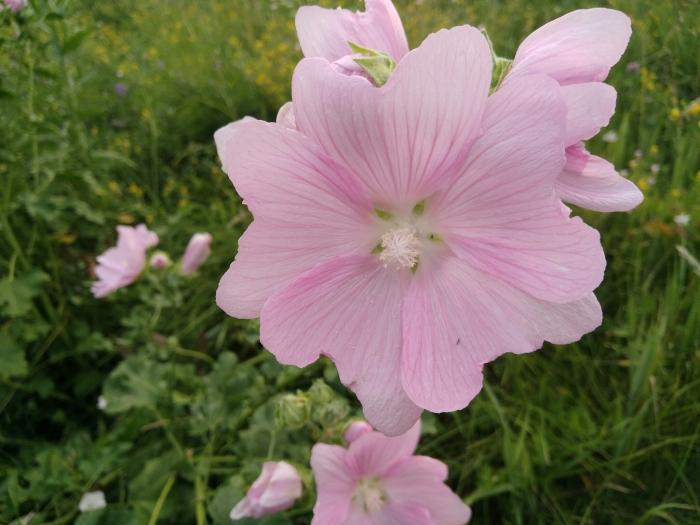Thuringian Mallow
(Malva thuringiaca)
Thuringian Mallow (Malva thuringiaca)
/
/

Георгий
CC BY 4.0
Image By:
Георгий
Recorded By:
Copyright:
CC BY 4.0
Copyright Notice:
Photo by: Георгий | License Type: CC BY 4.0 | License URL: http://creativecommons.org/licenses/by/4.0/ | Rights Holder: Георгий | Publisher: iNaturalist | Date Created: 2019-07-23T18:33:19-07:00 |

























Estimated Native Range
Summary
Malva thuringiaca, commonly known as Thuringian Mallow, is a perennial herb native to Europe and Asia. It is commonly found in meadows, grasslands, and along riverbanks, where it benefits from the moist, fertile soil. Thuringian Mallow typically grows at a moderate rate to a height of 3-5 feet (0.9-1.5 meters) and a width of 2-3 feet (0.6-0.9 meters). Its appearance is characterized by its erect stems, lobed leaves, and showy pink flowers with five petals that bloom in the summer, attracting pollinators such as bees and butterflies.
This plant is valued for its ornamental flowers and its ability to adapt to various soil types, making it a versatile choice for garden borders, cottage gardens, and naturalized areas. Thuringian Mallow is also used for its medicinal properties, as various parts of the plant have been traditionally used to treat inflammation and digestive issues. In cultivation, it requires full sun to part shade and prefers medium or fast-draining clay, loam, or sandy soils. It is drought-tolerant once established, making it a low-maintenance option for gardeners. While generally disease-resistant, it can be susceptible to rust and should be monitored for signs of infection.CC BY-SA 4.0
This plant is valued for its ornamental flowers and its ability to adapt to various soil types, making it a versatile choice for garden borders, cottage gardens, and naturalized areas. Thuringian Mallow is also used for its medicinal properties, as various parts of the plant have been traditionally used to treat inflammation and digestive issues. In cultivation, it requires full sun to part shade and prefers medium or fast-draining clay, loam, or sandy soils. It is drought-tolerant once established, making it a low-maintenance option for gardeners. While generally disease-resistant, it can be susceptible to rust and should be monitored for signs of infection.CC BY-SA 4.0
Plant Description
- Plant Type: Herb
- Height: 3-5 feet
- Width: 2-3 feet
- Growth Rate: Moderate
- Flower Color: Pink
- Flowering Season: Summer
- Leaf Retention: Deciduous
Growth Requirements
- Sun: Full Sun, Part Shade
- Water: Medium
- Drainage: Medium, Fast
Common Uses
Border Plant, Butterfly Garden, Low Maintenance
Other Names
Common Names: Thuringian Lavatera
Scientific Names: , Malva thuringiaca, Lavatera salvitellensis,
GBIF Accepted Name: